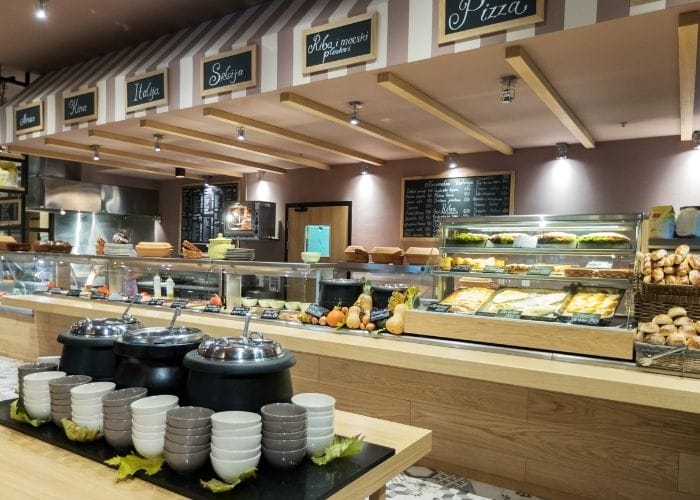
As emerging brands consider their channel strategy, some may ignore the foodservice industry. But with an industry estimated at $1.7 trillion in the United States in 2020, foodservice is too important a channel for food and beverage brands to ignore.
Foodservice encompasses all businesses that deal with meals prepared outside the home. This includes restaurants as well as catering companies, hospitals and school cafeteriass, coffee and private chefs.
Stephanie Lind, founder and chief strategy officer for SKU partner Elohi Strategic Advisors, is focused on empowering companies to pioneer, develop, and innovate in the foodservice industry. We talked with her about the best strategies for small emerging brands to get their products into this large and lucrative channel.
More than Half the Food Industry
SKU: What is the benefit for a company to move into Foodservice?
Lind: Foodservice is where trends start. Plus, in normal times, it is more than 50 percent of the total food industry, and it tends to be a more profitable channel. So, the real question is, why would you not be in foodservice?
SKU: What does a company need to do to be ready to move into the foodservice industry?
Lind: Foodservice is not hard, but it is complicated. So it should not be undertaken lightly or by a team that does not have the right experience. Products, packaging, pricing, marketing collateral, messaging and distribution must all be tailored to the needs of the new business. Understanding how to navigate the push/pull demand generation of operators and distributors is critical to success.

Large but complicated
SKU: What is the difference in selling into retail versus foodservice?
Lind: Retail has approximately 250K doors spanning grocery, conventional and natural, drug, mass, club, dollar, specialty and others. While each channel requires some specialization, generally the same products are used but put into different pack/size configurations.
At least for now, there are specific windows for decision making and twice a year changes are made to the category planogram. Promotions are driven by price and placement and scan data can be reviewed to understand the lift of the program in the moment and over time. Additionally, there are several large distributors (UNFI, KeHe) and beyond that direct shipments or customer-owned supply chain (Walmart) handles getting your products to the stores.
Foodservice has 700K establishments today and we have every reason to believe it will climb back to its pre-COVID 1.1MM unit number in the next 18-24 months. There are 19 segments in the Noncommercial side of foodservice. Those segments may require a bid (K-12, Military, Prisons) or be highly seasonal (Colleges). Airlines, corporate cafeterias, and hospitals also have different requirements. Moreover, most of the Top 100 restaurant chains will require proprietary products with an 18-24 month selling cycle. There are approximately 2.5K distributors in the space that will require set up, training and management.
As you think about launching or scaling your foodservice business, if you do not understand the intricacies of the channel and have a well-defined strategy and budget for the first three years, you will likely fail. If you succeed, it could take you five years to gain any real traction.
Preparation is key
SKU: What are some things a brand should do to prepare before going into foodservice.
Lind:
1. Understand the role foodservice plays in your corporate strategy
2. Create an Omnichannel, tiered pricing architecture ASAP even if not going into foodservice right away.
3. Do not assume that your retail-focused head of sales can or should handle it (and for Pete’s sake, do not hire anyone upfront)
4. Make sure you consider the channel when deciding on Co-manufacturing, co-packers and packaging partners

